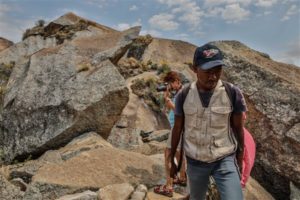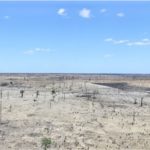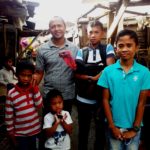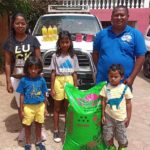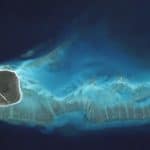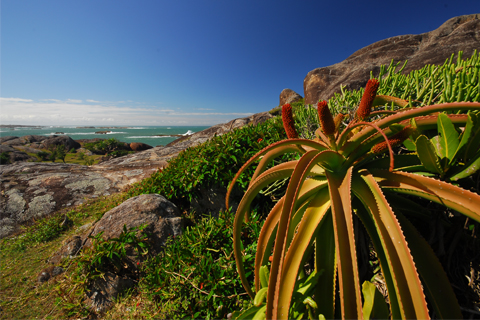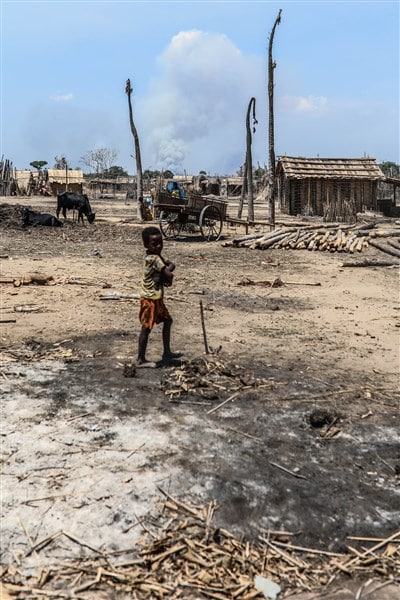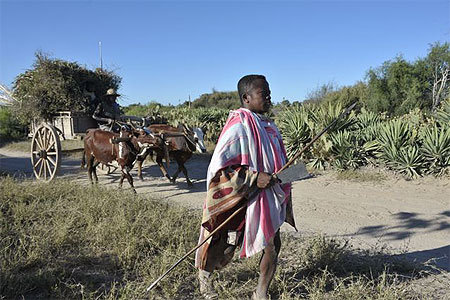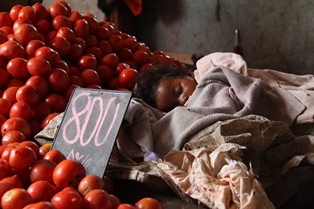The surroundings of Fianarantsoa from a tourist point of view
From Fianarantsoa to the south
From Fianarantsoa the RN 7 runs between rocks and rivers towards Ambalavao (54 km south). From 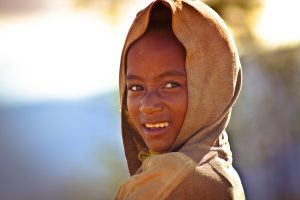
Ambalavao
The town took off in 1900 when the colonial administration elevated it to the rank of district chief and built schools there. Merchants soon left Ambohimandroso, a Merina garrison village (7 km south), to settle in this "new valley", which was opened up by a road from the capital in 1916.
The Zebu Market
Through the use of this road service, Ambalavao became one of the largest zebu markets on the island. Here, cattle traders from Imerina and buyers from the canneries of Fianarantsoa, Ambohimahasoa and Antananarivo did business with cattle breeders from the southern regions of Ankaramena, Ihosy and Ivohibe.
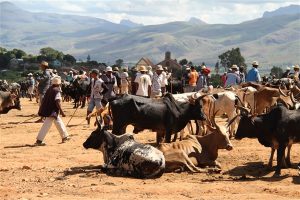
Its horns are firmly erected on its head. In Madagascar, this animal is the object of all desire: the zebu. The greatest wealth of the Malagasy man, sometimes the acquisition of a life. People come from all over the great island to the market of Ambalavao, the largest in the country. There are no less than 2,000 zebus crammed together, so there is something for everyone. A beautiful animal can be had for around 400 euros. A colossal sum in this country, where the average salary is about 50 euros.
Antemoro paper
In 1936, a French planter, seduced by the beauty of Antemoro paper, introduced in Ambalavao this art originating from the East Coast. The paper shortage that the island suffered during World War II favored the development of its factory, and this handmade paper, decorated with wild flowers, is now famous throughout the island.
The small family business behind the town hall can be visited. Amateurs can buy sheets of different sizes to make office supplies, bags, albums, lampshades, paintings...
The Anjaha (Anja) Resrvat
Anja: a nature reserve AND a village, this is one of the notorious peculiarities of this reserve, it is managed directly by the inhabitants of the village and this is not to displease us. Because besides preserving a natural place, it is a sustainable and ethical local economy that has been built in Anja.

Unlike private reserves, whose profits benefit only a handful of people, or national parks, which all too often neglect the local population in their vicinity, community reserves are a remarkable example of responsible tourism that shows solidarity and is close to our hearts.
In short, all this to say that the context increased tenfold our joy when we discovered the village reserve of Anja.
Already at our arrival it becomes clear that the visit will be a beautiful moment.
The surroundings are magnificent: a small village surrounded by rice fields and a lake, at the foot of an impressive green rock massif.
"Anjaha" with its real name meaning "in the forest where there are baobabs" is a great reserve worth visiting.
Today, we might as well warn you: there are no more baobabs!
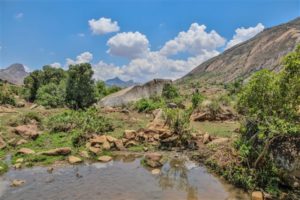
There you can observe orchids, ficus and dwarf pachypodium.
The fauna is mainly characterized by an important colony of Maki lemurs (today about 650, while 20 years ago they were almost extinct), as well as numerous birds, chameleons, boas...
The king carp is abundant in the waters. The view from a rocky promontory is magnificent.
A big breath of fresh air.
The shortest tour takes 1h30/2h on foot and is accessible to all.
The more sporty circuit to the attack on the cliffs requires 6 hours of hiking and climbing. In between, several loops are proposed with different options (lemurs, medicinal plants, reptiles, viewpoints, caves, orchids).
In any case, bring good shoes, water, a hat or cap and mosquito repellent.
The sacred mountain Ambondrombe
The peaks surrounding the Ambalavao basin are considered throughout the island as the dwelling place of the dead and the inhabitants of the Ambalavao region as their guardians.
Thus, only a few dare to use the Mount Ambondrombe to climb, a rock shrouded in clouds, the village of Ambohimahamasina, 42 km east of Ambalavo, dominates. To climb it, you must ask permission from the local authorities and be accompanied.
The rock of Ifandana
This imposing cone-shaped rock (18 km southwest of Ambalavao, visible from RN 7) is also sacred to the Betsileo, and it is forbidden to point the finger.
When Radama set out to subdue the Betsileo country around 1811, he met resistance from Andriamponolona. This king sought refuge with his people in the village of Manlanywhich is perched on a peak 530 m above the plain.
The Betsileo people thus held off the siege of the Merina army for almost two months. Some starved to death, but most preferred to commit mass suicide by throwing themselves off the cliff.
Their bones still lie at the bottom of a cave on the rock face. The few survivors eventually became prisoners and were taken into slavery in Imerina, while the village was burned and reconstruction forbidden.
The site was given the name Ifandana, the "place of resistance".
To climb this huge rock and enjoy a panoramic view of the Tsienimparihy plain and the old "city Ambohimandroso to enjoy, it is best to contact the authorities of Ambalavao.
Andringitra Mountains
The eastern part of this massif, which contains valuable remnants of primary forest, has been designated as an integral 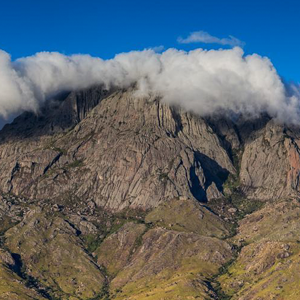
The excursions begin in the Village Antanifotsy, 50 km south of Ambalavao.
The most sporty climb Pic Boby, the second highest peak on the island (2 658 m).
Andringitra in south-central Madagascar was declared a national park in 1999 and has been managed by WWF since 1993.
The park covers an area of 31,160 hectares, characterized by mountains, including the Pic Boby, which at 2,658 meters is the highest accessible peak in Madagascar.
Andringitra is an important central link in the longest unbroken chain of remaining rainforest in Madagascar, extending from the Ranomafana National Park in the north to the Peak Ivohibe extends in the south over about 180 kilometers.
The park is divided into three ecosystems: Low-elevation rainforest, highland forest, and high-elevation vegetation. The climate ranges from humid and tropical in the eastern lowland rainforests to extremely cold temperatures at higher elevations, which can drop to -8°C.
Andringitra 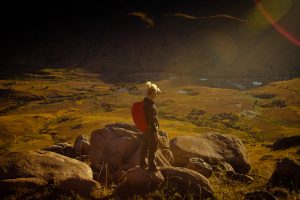
The forging villages
The villages located on the edge of the forest, on the road to Ambohimahamasina (east of Ambalavao) are dedicated to the work of blacksmiths.
The workshop, which is separate from the house, houses a large bellows with two vertical cylinders of Asian tradition and a furnace dug into the ground, fired by charcoal.
The blacksmiths make iron knives, axes, candlesticks or edged (spade) blades.
The ore is mined in small quarries and shafts up to 20 meters deep... when the iron is not extracted from automobile spring blades.
Tue
Metallurgy is very old in Madagascar, but the range of products manufactured is still very limited and the technological level very limited.
Blacksmiths make three types of items almost exclusively: the traditional narrow spade, widely used in agriculture; the "messou be" (large knife), used for everything from rice harvesting to household chores; and the machete, which is the "all-purpose" tool of the inhabitants of the bush.
However, this basic tool is perfectly adapted to its use.
The Angady seems to do a very poor job with its small size, while it proves to be very efficient in working the particularly hard laterite soil.
The "messou be" are extremely solid and resistant to wear, despite their rustic appearance. With its characteristic shoulder and the possibility of being fitted into the handle, the "messou be" is a very efficient tool to clear a path through the forest. Apart from these tools, the blacksmiths also perform other works, but only to order: making zebu carts, plowshares, etc.
Betsileo wild silk
Ambalavao is known for its traditional Lamba Arindrano fabrics in iridescent colors and edged with small beads, spun and woven entirely by hand.
At the entrance of Ambalavao, the Soalandy workshop invites you to discover the different stages of silk processing, from the tree to the silky and colorful scarf. The visit begins in the courtyard, where you can observe the difference between wild silk and cultured silk, both found in Madagascar.
The women will then show you how to boil it, spin it and dye it before you get to the very impressive stage of weaving.
A very interesting visit!
You can then buy some souvenirs in a store open 7 days a week. Arline also has five rooms on site, for small budgets.
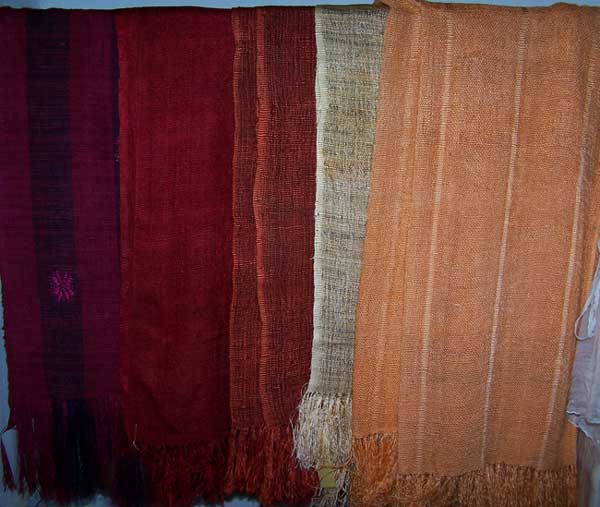
The rich sometimes buy the shroud that will accompany them to the grave.
With the rise of the cotton industry and the disappearance of dye plants and those that served as food for the lava, silk production has declined sharply since the beginning of the 20th century.
If in the past all Betsileo villagers spun and wove silk, only Ambalavao and its immediate surroundings of Ambolavabo and of Ambohimahamasina, 40 km to the east, continue this tradition.
Ambalavao is famous for its red, rose, white and gray wine production, but unfortunately they are not up to western standards.

